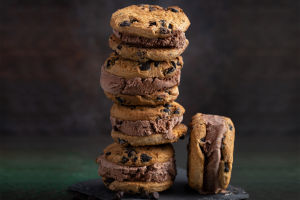Lykkers, you may have heard of bird's nest, which is considered a luxury health food in many parts of the world.
But what exactly is it? Simply put, bird's nest refers to the nests of certain species of swifts, especially those of the genus Collocalia, more commonly known as the edible-nest swiftlet.
These nests are made from the swiftlets' saliva, which is mixed with other substances and hardens to form a unique structure. The nests are known for their delicate, translucent appearance and are collected for consumption as a nutrient-rich food.
Origins of Bird's Nest Consumption
The story of bird's nest consumption dates back thousands of years. The earliest recorded use of bird's nest as food comes from Southeast Asia. In ancient China, during the Tang Dynasty, people were already exchanging bird's nest with locals from Indonesia for porcelain items. Fast forward to the Ming Dynasty, when the famous eunuch and explorer Zheng He tasted bird's nest during one of his maritime expeditions. After trying it, Zheng He introduced this exotic delicacy to the Chinese Emperor, and it quickly gained fame as a royal treat. From that point on, the popularity of bird's nest spread, and it became a well-known health supplement in China.
Different Types of Bird's Nest
Bird's nest comes in different grades based on the quality of the nest and the purity of the swiftlet saliva. The highest quality is known as "official nest" or "Guan Yan." This type of nest is made from the swiftlet's first nest-building attempt, using the thick, sticky saliva it secretes. These nests are typically semi-circular in shape, measuring about 2.5–3.5 cm in depth and about 5.8 cm in diameter. The best-quality nests are almost transparent and silky, rich in nutrients, and highly sought after.
On the other hand, "hairy nest" or "Mao Yan" comes from nests that were built after the first one was harvested. Since the second nests have lower levels of saliva and may contain feathers and other impurities, they are considered to be of lesser quality. Third-time nests are even lower in quality, and thus, their nutritional value and market price decrease.
The Rich History of Bird's Nest in China
Now, let's explore the historical journey of bird's nest in China. According to historical records, the consumption of bird's nest dates back at least 1,500 years to the Tang Dynasty, where it was seen as a luxury food fit for royalty. Some believe that Chinese sailors brought back bird's nest from the Southeast Asian islands and offered it as a tribute to the Emperor. During those times, eating bird's nest was reserved exclusively for the emperor and his royal family.
Interestingly, other records suggest that the consumption of bird's nest became popular in China around the Ming Dynasty, when Zheng He, the renowned explorer, discovered it on one of his voyages. In fact, it was said that while Zheng He's fleet was stranded on an island during a storm, they found bird's nests hidden in the cliffs. After consuming the nests, the crew felt energized and healthy. Impressed by its effects, Zheng He took some nests back to China as gifts for Emperor Yongle. Since then, bird's nest became a symbol of luxury and health, eventually spreading throughout China.
Why is Bird's Nest So Special?
Bird's nest is not just a delicacy; it's packed with numerous health benefits. It is primarily made up of proteins, amino acids, and other essential nutrients like calcium, phosphorus, and iron. These components make bird's nest a great food for boosting immunity, improving skin health, and aiding in digestion. It is often used to help people recover from illnesses, enhance lung health, and improve overall vitality.
The high concentration of glycoproteins and other growth factors found in bird's nest makes it particularly beneficial for skin rejuvenation. Many people use bird's nest as a beauty food, believing that it helps maintain a youthful complexion by keeping the skin hydrated and glowing. It's also believed to have a positive impact on the respiratory system, making it a great remedy for coughs and lung issues.
How to Prepare Bird's Nest
If you're intrigued by the health benefits of bird's nest and want to try it yourself, here's a simple recipe for preparing this delicacy:
1. Choose a good-quality bird's nest.
2. Soak the nest in water for several hours until it softens and expands.
3. Remove any feathers or impurities using tweezers and rinse it thoroughly with clean water.
4. Tear the softened nest into strips, ensuring it remains intact.
5. Place the nest in a steam pot with water and steam it for 40-45 minutes.
6. Once steamed, transfer the nest into a bowl. You can add rock sugar, coconut milk, or fruit juices to enhance the flavor and enjoy this nutritious treat!
Conclusion
Bird's nest is more than just a tasty treat—it's a symbol of luxury and health, deeply rooted in both Chinese tradition and history. Whether you're looking for a beauty food or a way to boost your immune system, bird's nest can offer a variety of benefits. With its rich history and numerous health properties, it's no wonder that this exotic food has remained a prized delicacy for centuries. So, what do you think, Lykkers? Would you consider adding bird's nest to your wellness routine?


